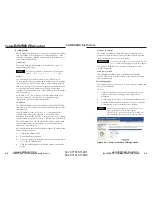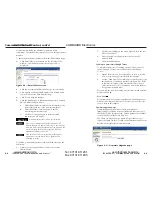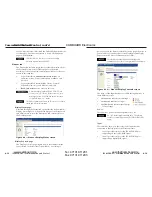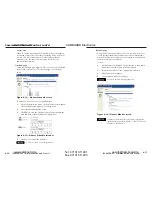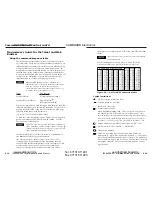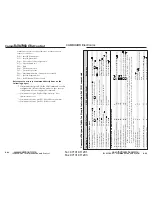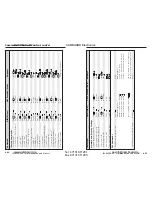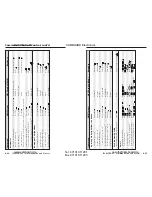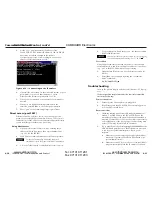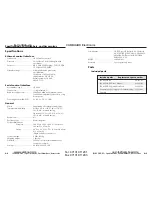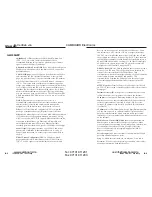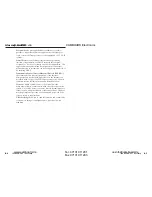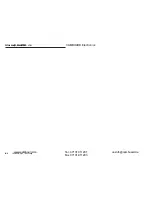
IPL M PDP-ES • Communication and Control
Communication and Control, cont’d
IPL M PDP-ES • Communication and Control
example of each command in ASCII (Telnet) and URL Encoded
(Web).
Upper and lower case text can be used interchangeably
except where noted.
Symbol definitions are shown below. An ASCII to HEX
conversion table is also provided in figure 4-9 (below).
ASCII to HEX Conversion Table
•
Figure 4-9 — ASCII-to-HEX conversion table
Symbol definitions
= CR/LF (carriage return/line feed)
= Carriage return (no line feed)
• =
Space (hard) character
X2
= Command data section
Note: For Web encoding only
- Data is directed to a specified port
and must be encoded (URL encoding) if non-alphanumeric. Since
data can include either command terminator, they must be encoded as
follows when used within the data section: space (hex: 20) would be
encoded as %20 and Plus sign (hex: 2B) would be encoded as %2B.
X3
= Greenwich Mean Time (GMT) offset value (-12.0 to +14.0)
X5
= On/Off status: 0 = Off/Disable; 1 = On/Enable
X11
= Unit version number
X12
= Name is a text string up to 24 characters drawn from the
alphabet (A-Z), digits (0-9), minus sign/hyphen (-). No blank or
space characters are permitted as part of a name. No distinction
is made between upper- and lowercase. The first character must
be an alpha character. The last character must not be a minus
sign/hyphen.
4-19
Programmer’s Guide for the Telnet and Web
Browser
Using the command/response table
The following are either Telnet (port 23) or Web browser (port
80) commands. There are some minor differences when you are
implementing these commands via Telnet or via URL encoding
using a Web browser. All commands listed below will work
using either connection method but, due to some limitations of
the Web browser, the encapsulation characters are modified to
make sure that the Web browser will properly handle them. All
examples in the command/response table show the proper
implementation in a Telnet or Web browser session.
Note for Web browsers
: all non-alphanumeric
characters must be represented as their hex equivalent,
such as %xx where xx equals the two character
representation of the hex byte that needs to be sent (e.g.,
a comma would be represented as %2C).
Telnet
Web Browser
Escape (Hex 1B)
W [must not be encoded]
Carriage Return (Hex 0D)
Pipe Character ( )
[must not be encoded]
When SIS commands are used through a Web browser, the URL
reference is used below to shorten the examples. This would in
practice be the full URL of the control interface and Web page
reference including all path information.
(e.g., http://192.168.254.254/index.html)
To send any of the commands using a Web browser you need to
prefix them with the full URL followed by ?cmd=. See URL
Encoding later in this chapter.
With Telnet you can use either the Escape commands or
the W commands, and the carriage return or the pipe ( )
character. With the Web browser you are required to use
the W commands and the pipe character.
In either method {Data} = Data is directed to a specified port
and must be encoded if non-alphanumeric.
The Command/response table for Simple Instruction Set (SIS)
commands later in this chapter lists the commands that the
IPL M PDP-ES interface recognizes as valid, the responses that
are returned to the host, a description of the command’s
function or the results of executing the command, and an
4-18
im Vertrieb von
CAMBOARD Electronics
www.camboard.de
Tel. 07131 911201
Fax 07131 911203








